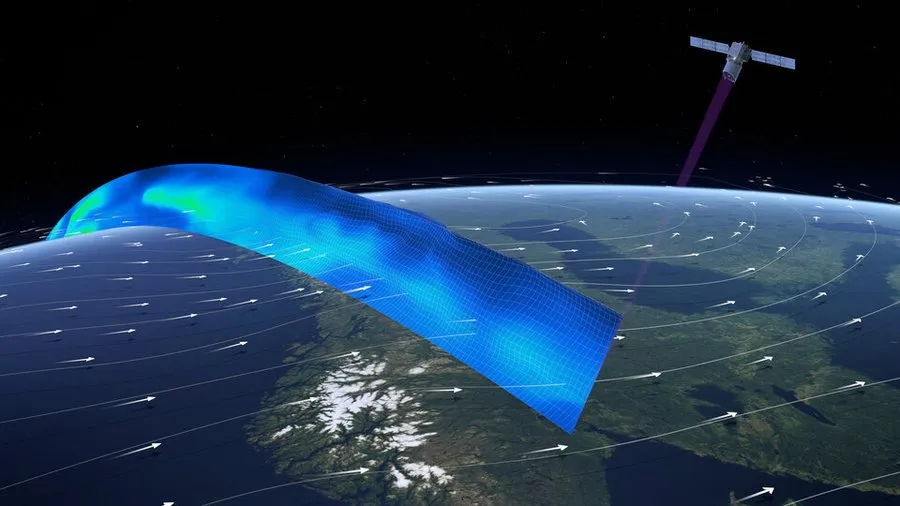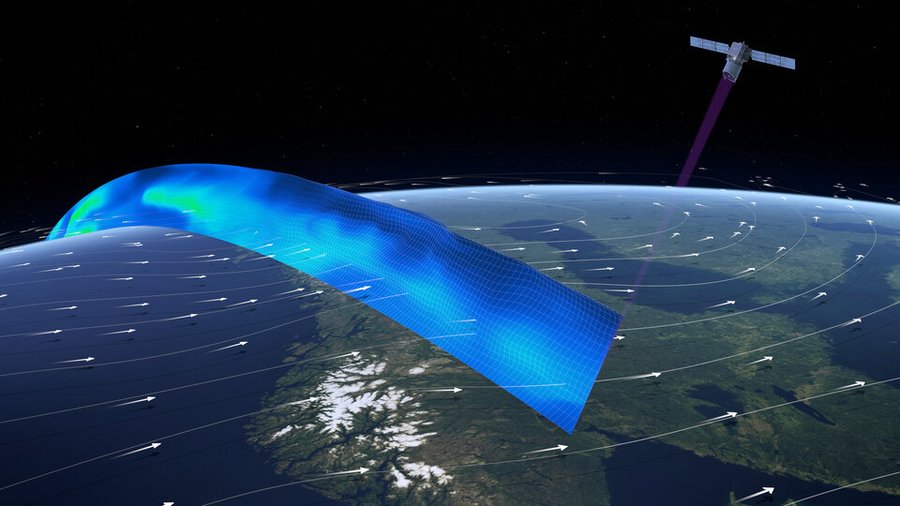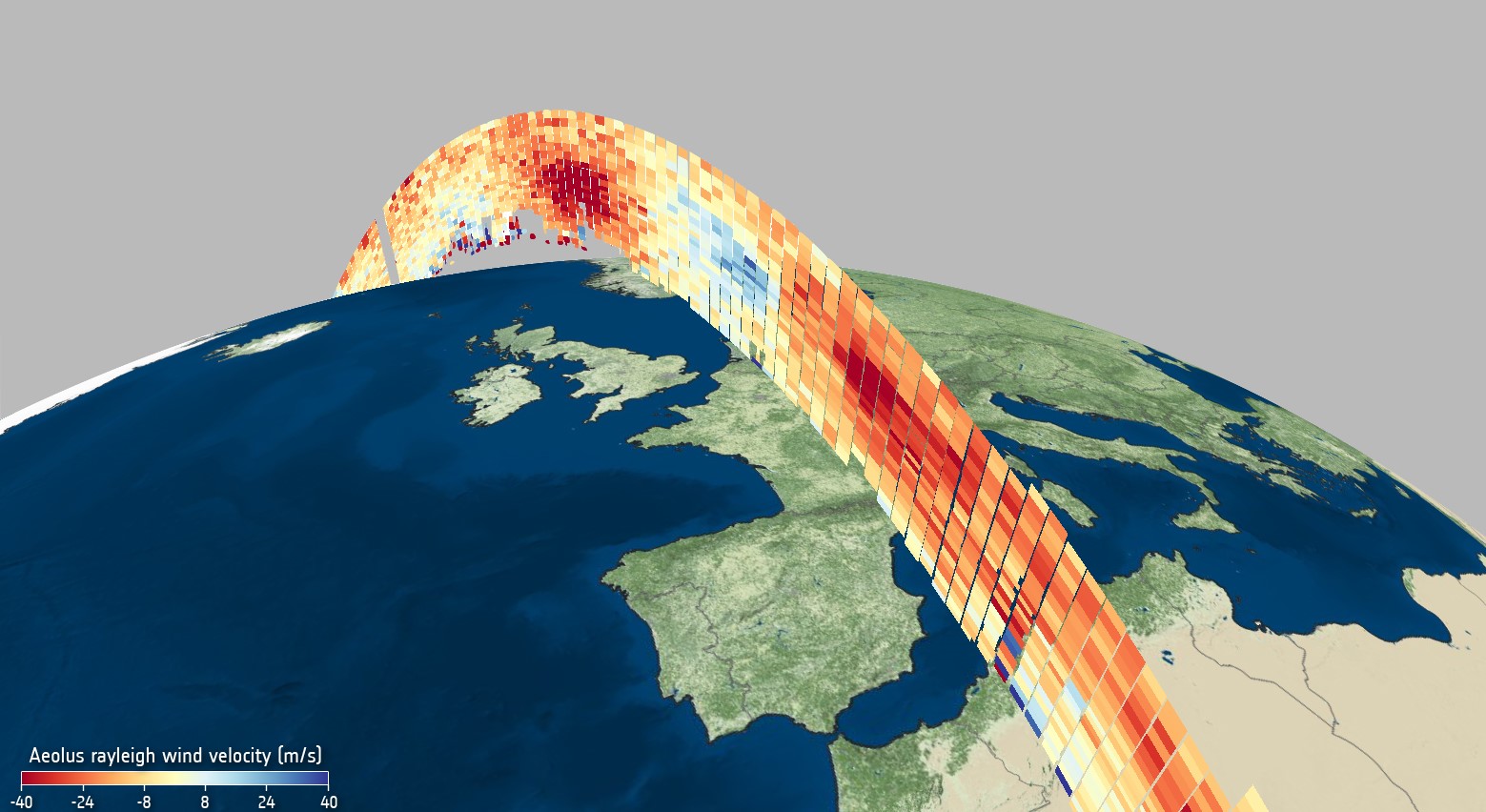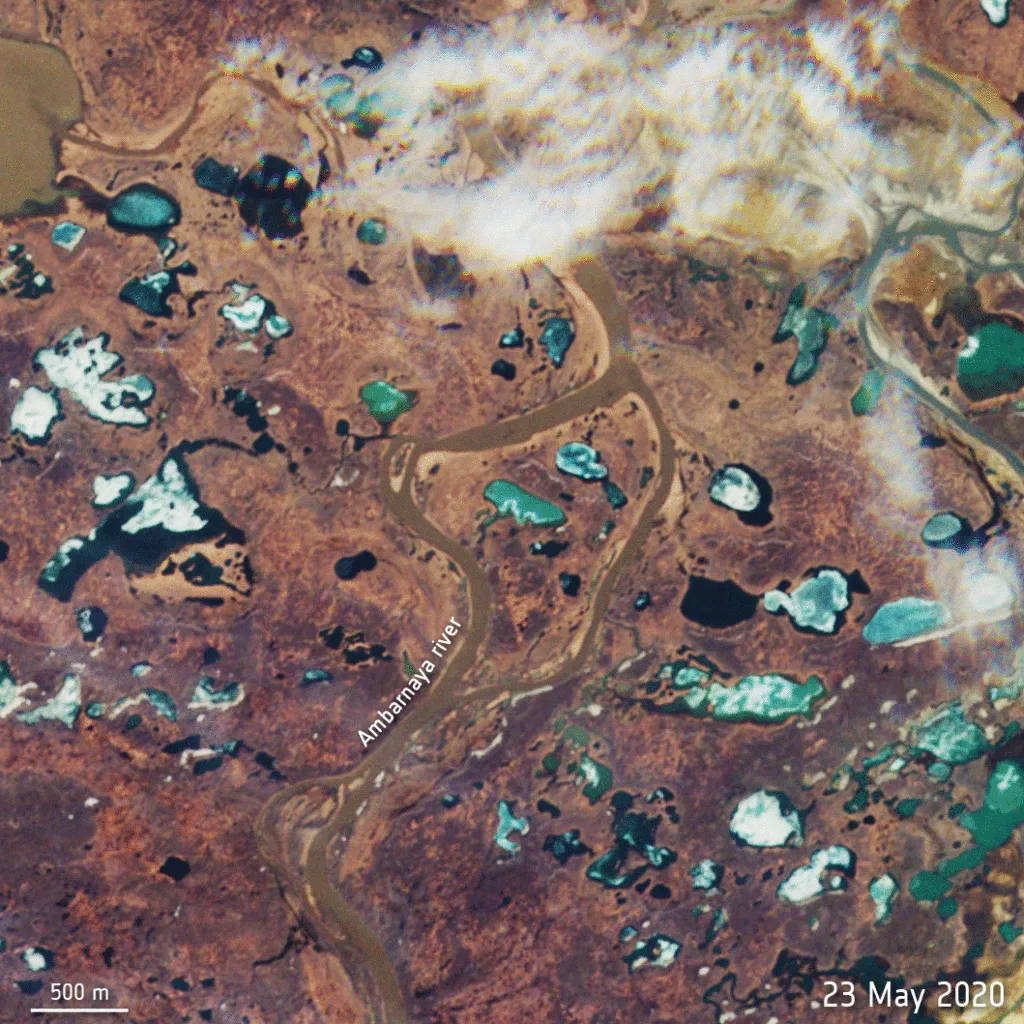
Photos: Russian Arctic Circle oil spill as seen from space
Russia declared a state of emergency on June 3, 2020, after a fuel tank holding 21,000 tons of diesel oil collapsed in Arctic Circle near the Russian city of Norilsk. It is suspected that melting permafrost caused the tank to collapse.
Citing Rosprirodnadzor, the Federal Service for Supervision of Natural Resources in Russia, USA Today reports that 6,000 tons spilled onto the ground, while another 15,000 tons got into the water – infusing oil products into the Ambarnaya and Daldykan rivers and in almost all their tributaries.
Satellite images show leaking diesel oil floating as far as 7 miles from the accident site, turning vast stretches of the Ambarnaya deep red. In the below animation provided by the European Space Agency, diesel oil is clearly visible in the images captured by the Copernicus Sentinel-2 mission on May 31 and June 1:
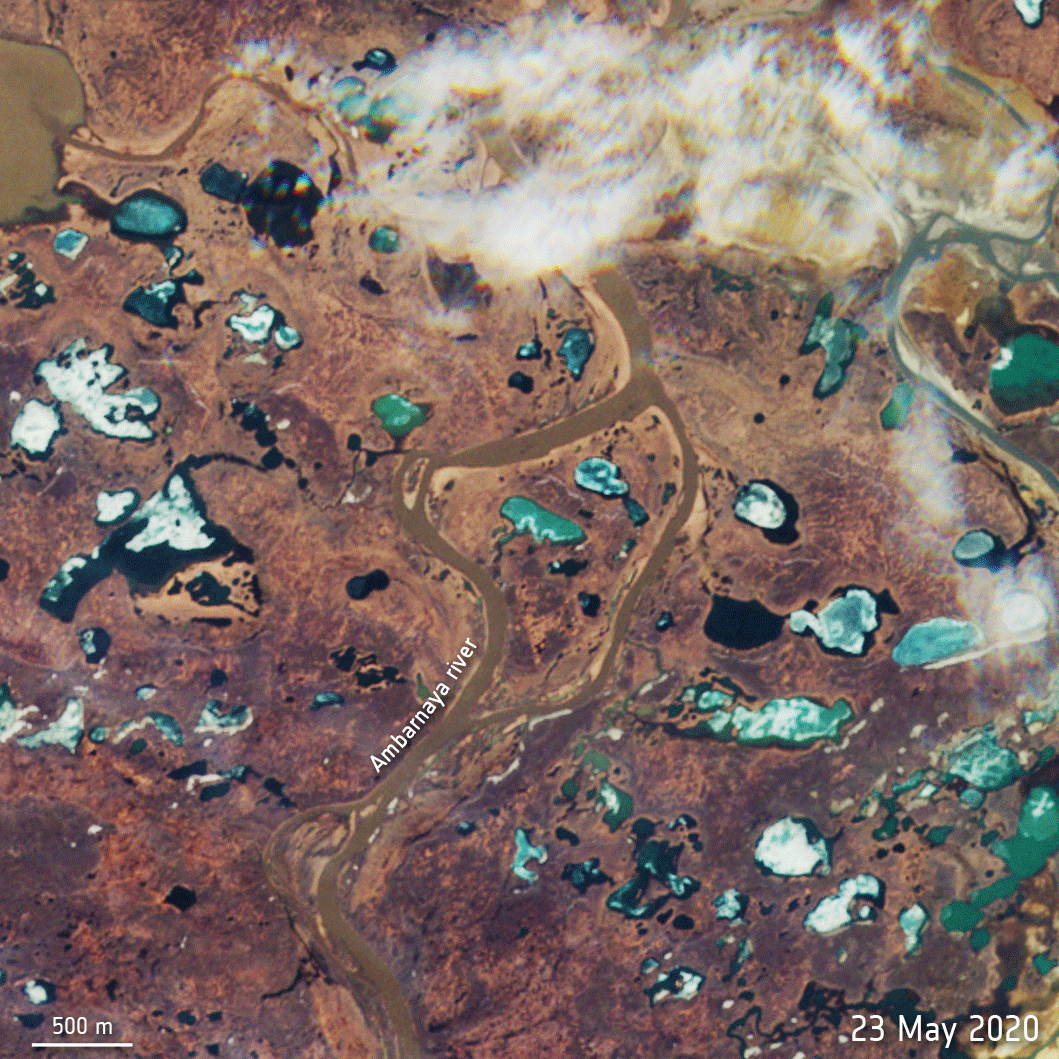
On June 4, earth imaging company Planet’s Dove satellite captured the devastating oil spill:
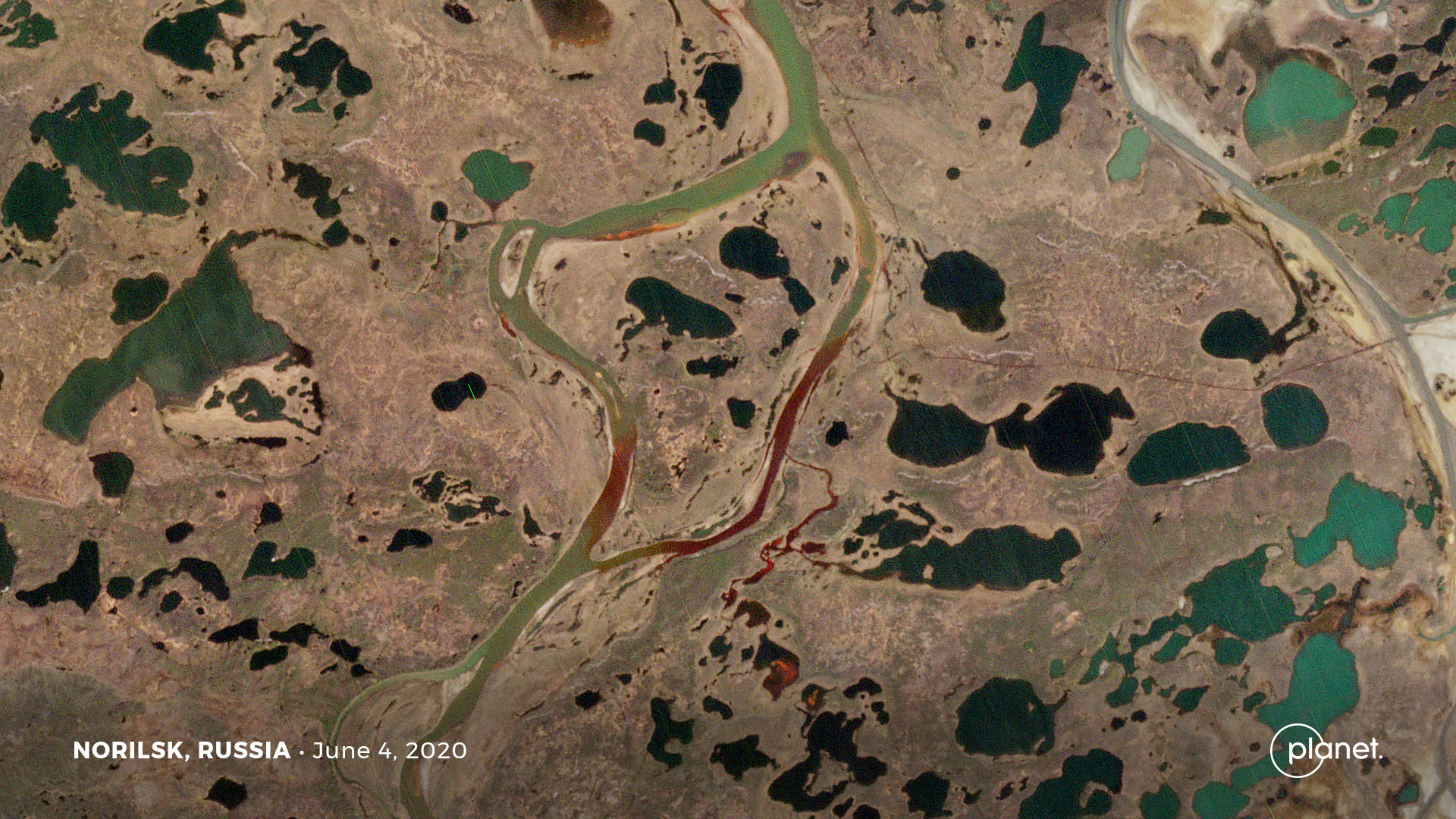
In new satellite imagery captured by Maxar on June 6, mitigation and cleanup operations could be seen. Multiple oil containment booms have been placed along the Ambarnaya in an attempt to contain the oil spill and prevent it from flowing downstream:
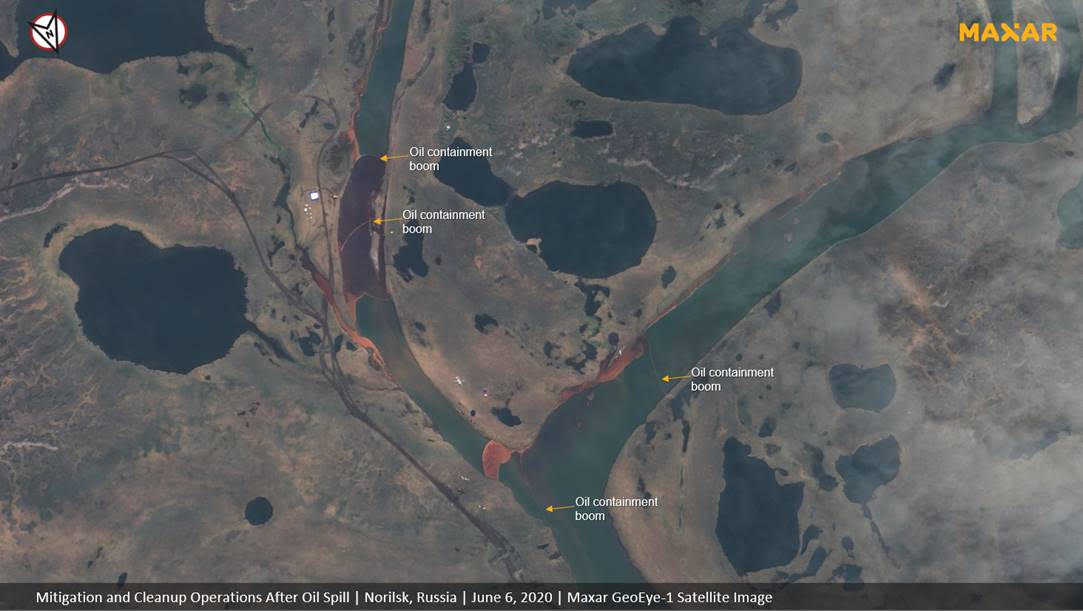
Arctic Circle, oil spill in Russia
The Ambarnaya River flows into Lake Pyasino – a major body of water and source of the Pysaina river.
According to Russian media, the containment team had already cleaned about 53,000 cubic feet of soil at the site and pumped out 201 tons of fuel by June 6. More than 130 tons of oil had been removed from the Ambarnaya river as well.
Greenpeace believes that the damage to water bodies alone the spill could amount to more than $85 million.
Did you like the article abut detecting oil spill from space? Read more and subscribe to our monthly newsletter!






